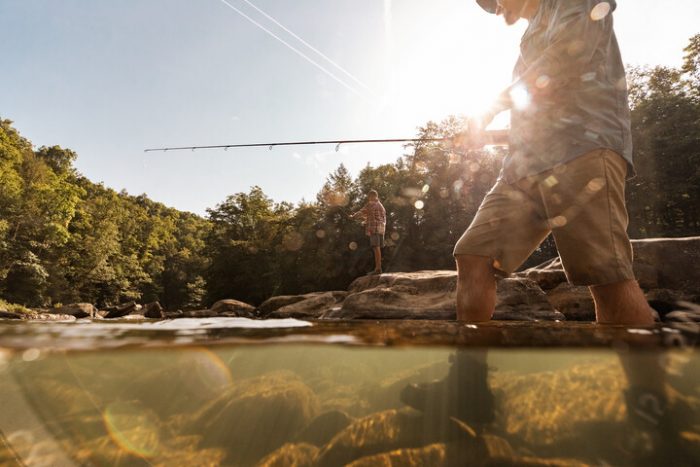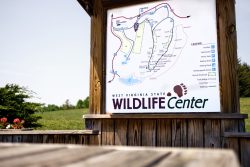West Virginia is a wonderful place for wild birds. With more than 170 breeding species and an ever-changing assortment of migrants and winter residents, the state offers unlimited opportunities both to observe and to promote birdlife. Its varied habitats make the Mountain State a hub of biodiversity in the eastern United States.
West Virginia: A Birding Paradise
West Virginia is home to birds like Swainson’s Warblers, which reach their northernmost breeding grounds in the Cumberland Mountains, while the Allegheny Mountains are the southernmost locations for nesting Olive-sided Flycatchers and Nashville Warblers.
With more than 12 million forested acres, West Virginia is vitally important to millions of forest birds. Broad river valleys are flanked by dry oak-pine ridges in the Eastern Panhandle, home to birds from magnificent Bald Eagles to tiny Pine Warblers. The Allegheny Mountains support families of Northern Saw-whet Owls and Blue-headed Vireos among northern hardwoods and spruce forests. Oak-dominated forests covering steep ridges tapering westward to the Ohio River offer crucial habitat to Wood Thrushes and Cerulean Warblers, which are suffering steep population declines.
The state’s thousands of streams, creeks, and rivers provide food and lodging to Common Mergansers, Louisiana Waterthrushes, and other birds dependent on riparian habitats. Hayfields, pastures, and other agricultural areas support American Kestrels and Bobolinks along with other valley birds. West Virginia’s wetlands, despite relative scarcity, have an outsized importance to Alder Flycatchers, Swamp Sparrows, and other specialists in marshes, fens, and swamps.
Some of our birds make West Virginia their home year-round, while others come to nest in our state from winter haunts as far away as Argentina. Other birds pass through in spring and fall, stopping only to feed and rest, while a few birds such as Rough-legged Hawks fly in from the north for the winter.
Get Started Bird Watching
Hundreds of bird species have been observed in our state. Some of these birds, such as American Robin, may be found almost anywhere and during most times of the year. Most birds, however, need food and shelter that is available only in certain places. You will likely need to visit a forest to find a Scarlet Tanager, or a pasture or hayfield to find an Eastern Meadowlark. The time of year is important, too, as many of our birds only spend a part of their year in the state.
View our Get Started Bird Watching brochure here, which provides information on all the basics including equipment. Finding a bird involves knowing where and when it is most likely to be present. For a list of birds that you are most likely to encounter, showing when they are most in the state, view our Birds of West Virginia brochure. The West Virginia Bird Records Committee maintains the official state bird list, which includes every species that has been observed in the state and can be found here.
A great place to start birding is one of West Virginia’s state parks or wildlife management areas. Click here for a general list of great birding spots in the Mountain State. Wherever you go, the Cornell Lab of Ornithology’s] website can make your visit more informative and enjoyable – if you’re interested in getting started with eBird, click here. Birding doesn’t have to be expensive and can be enjoyed by the whole family.
Make Your Property Bird Friendly
Enjoying birds can begin at home, and there are many ways to make your property more attractive to our feathered friends.
Feeding birds can be as simple as providing a nectar feeder for hummingbirds during the spring and summer, or hanging a sock feeder for chickadees and finches year round. Other bird feeders range from simple platforms to elaborate works of art. The two most popular types of seed for bird feeding are black oil sunflower and nyjer, both readily available from many outlets. Be careful to place your feeders at a good distance from windows, as birds cannot see glass and suffer concussions or death from window strikes. Birds also appreciate the cover of shrubs and trees near bird feeders. Clean all feeders regularly and take them down for two weeks if you find a sick or dead bird nearby. For more information on properly maintaining feeders, click here.
Nest boxes or birdhouses are another way to make your property bird friendly. They range from large boxes for owls or ducks to small ones for wrens and chickadees. Many people install multiple birdhouses for the benefit of bluebirds and other cavity-nesting birds. While there are many birdhouses for sale, it isn’t difficult to make your own. Interested? Start by clicking here.
Native trees, plants, and shrubs in your yard can offer birds fruit, seeds, insects, and a place to nest. With native landscaping, your property can mirror the beauty of your natural area as well as attract birds and other wildlife. Interested in more information? Here’s a place to start.
How Does West Virginia Help Birds?
The Wildlife Resources Section of the Division of Natural Resources acts in a variety of ways to help the state’s birds. Most activities are organized under the State Wildlife Action Plan (SWAP), which focuses conservation actions based on lists of Species of Greatest Conservation Need and the many habitats found within the state. For a summary of the latest SWAP, click here, or to find the entire plan, click here. View the entire list of bird species included in the SWAP here.
WVDNR frequently partners with other agencies and organizations to achieve bird conservation goals. Within the state, for example, a partnership with the Natural Resources Conservation Service provides incentives to landowners to create or enhance habitat for birds and pollinators. Click here for more information. On a regional basis, the Appalachian Mountains Joint Venture involves state agencies and other organizations in cooperative activities to benefit target species such as Wood Thrush and Cerulean Warbler, as well as to protect habitats that are important to many bird species. For more information on the AMJV, click here.
Our wildlife biologists also monitor Species of Greatest Conservation Need. Examples include monitoring bald eagle nests, conducting the annual Breeding Bird Survey, and tracking populations of secretive marshbirds.
In some cases, we ask for help from state residents:
While we are no longer seeking reports of Bald Eagles, we continue to be interested in any reports of suspected nest locations.
Barn Owls occur statewide in open country and agricultural areas, and we welcome all reports of these elusive nocturnal hunters.
Loggerhead Shrikes occur in eastern West Virginia on pastures in the Greenbrier Valley, the South Branch Valley of Grant and Hardy Counties, and Jefferson and Berkeley Counties. We welcome all reports of this very rare predatory songbird.
Sightings can be reported to DNR.Wildlife@wv.gov.



